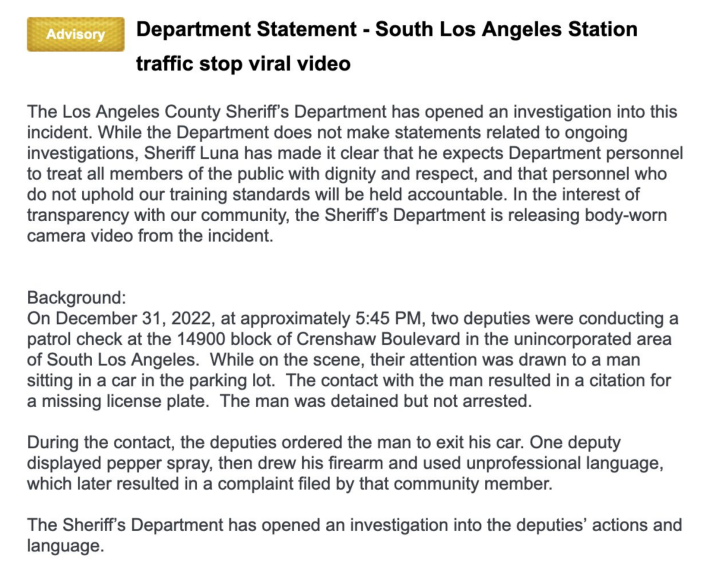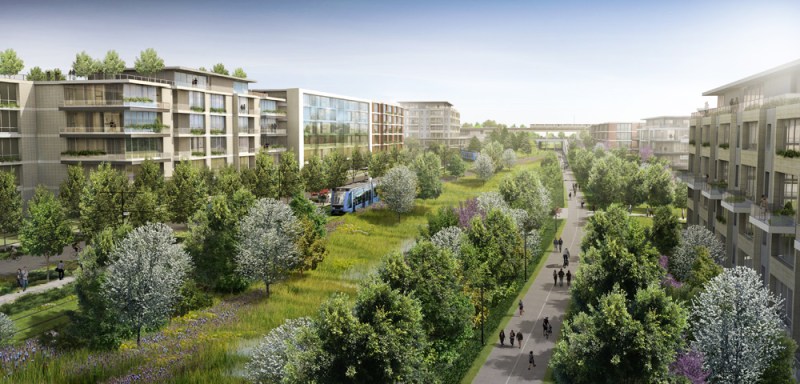For many Atlantans, the problem with their transit system boils down to this simple fact: It’s too scarce. "The number one complaint I hear about MARTA," says Robbie Ashe, the transit agency’s board chairman, "is that there’s not enough of it."
Atlanta transit, as we explored in earlier installments of the Getting Transit Right series, has been hampered by the region's history of highway-building, sprawl, and racially-motivated antagonism the suburbs feel toward the city. After the failure of a regional transportation referendum in 2012, the city set out to go it alone. In some ways, this has been a blessing.
Over the next few years, Atlanta transit will become less scarce. Last November, the residents of the city endorsed a new, half-cent sales tax that will raise $2.5 billion for transit over 40 years.
Because the 2016 referendum was a city ballot measure, the projects approved by voters are concentrated in the center of the region, where the demand for transit is strongest. And while one of Atlanta's first moves after the failed 2012 vote was to build a low-ridership, mixed-traffic streetcar downtown, the city seems to have learned from those mistakes and is looking to give future transit lines dedicated rights of way.
Still, there are many more decisions ahead that will determine whether Atlanta spends its transit revenue well or not.
What can the new revenue fund?
The list of improvements eligible for funding from the new tax is far larger than the revenue it will produce. The list covers $6.3 billion in capital projects and $4 billion in operations and maintenance -- compared to $2.5 billion the tax is expected to bring in over 40 years.
So Atlanta faces big choices about which projects to fund. Benjamin Limmer, MARTA’s assistant general manager of planning, told me about the set of "guiding principles" that are supposed to inform these decisions. These are the goals, in full:
- "Deliver equitable service improvements and other benefits to communities across the city.”
- “Support fast, efficient service by prioritizing transit investments in dedicated guideways.”
- “Focus on investments that will shape future growth to create a more livable Atlanta.”
These are good criteria, though "livability" is always a slippery target. It's also worth adding one more to the list: "Build transit where it will get used."
Here's a look at how Atlanta's upcoming transit investments can deliver on these four goals.
Building transit where people will use it
The potential expansion projects include eight within the city and two partially in the city. (Two other heavy rail extension projects have been proposed, but are located entirely outside the city.)
One way to understand these projects is to look at the number of residents and jobs within a half-mile of each of the lines, as shown in the table below.
This provides a useful framework for evaluating these projects, since the density of origins and destinations around a transit route is the best indicator of how many people will ride it.
A few conclusions stand out: Atlanta is best served by prioritizing the in-city projects on this list, and among those, the Capitol Avenue and Irwin-AUC light rail lines provide the best bang for the buck in connecting people to jobs. The BeltLine and I-20 West projects, on the other hand, have relatively few people living and working around them.
This is especially noteworthy since the BeltLine is the city’s best-known sustainable transportation project and seems to be near the front of the line for funds. That preferential position should be reconsidered.
Improving service equitably
Like most American cities, Atlanta is heavily segregated by race and income. As the following map illustrates, household incomes are far lower south and west of downtown than they are north of it.
Brionté McCorkle of the Georgia Sierra Club noted that people on the Southwest side of town “feel like they’ve gotten a lot of promises and no investment.” Will that change with the upcoming round of spending?
Among the major projects proposed by MARTA, a majority serve poorer neighborhoods, which are also predominantly African-American. Two clear exceptions, however, are two of the proposed projects with the most vocal constituencies -- the northern half of the BeltLine and the Clifton Corridor.
Also worth noting are the large sections of the city where more than 20 percent of households do not own cars, as shown in the below map. The southern half of the BeltLine and the Southwest rail corridor would significantly improve access in those places. These areas coincide, not surprisingly, with the places where people are currently most likely to use transit to get to work.

Faster transit
Officials I spoke with talked about transit investments in terms of the potential to reduce travel times -- a major issue in a city where transit riders are taxed by long commutes.
“We worked with the city to develop a whole host of things to make the speed of the system a priority,” said MARTA General Manager Keith Parker. “Ultimately we want people to be able to ride the system as fast or faster than in an automobile.”
This translates into a commitment to dedicated lanes for transit, which will help avoid the disaster of slow and unreliable service that the Atlanta Streetcar has come to symbolize.
It won't be easy, especially since it will entail repurposing car lanes on roads controlled by the state DOT. Ultimately, getting that street space for the exclusive use of transit will determine projects' viability, said Brian Gist of the Southern Environmental Law Center. "If the DOT won’t cede the space to get the dedicated right of way, is it still worth it to build the BRT there?"
MARTA will also have to limit the number of stops along its lines so as not to slow service, and incorporate transit signal priority systems at traffic lights so trains and buses aren't needlessly delayed. These are planning and engineering decisions that will have to get fleshed out as projects are developed.
Shaping future growth
“Who are we building the city of Atlanta for?” Gist asked me. “People who live here, or people who drive in and out of here to work?” He pointed specifically to the proposed extension of the MARTA line to the west, which would include a park and ride “serving people from outside the city,” as an example of the latter. Such projects encourage car-based growth and traffic rather than walkable, transit-oriented development.
But with the exception of the I-20 East and West lines, all the projects on Atlanta's list prioritize infill development over suburban commuting. None are located along unwalkable highway rights-of-way, and each would serve relatively compact neighborhoods with the potential to support transit-oriented development.
MARTA’s proposed improvements to the existing rail and bus system would also strengthen service in areas well-suited for future development. These changes include upgrading five bus routes as “arterial rapid transit” with more frequent service and nicer stops, adding service to five other routes so buses come every 15 minutes during peak hours, and building five infill rail stations between existing stops, which could spur new growth in existing neighborhoods.
Darin Givens of Thread ATL noted that these investments are "changing the way we interact with transit… it’s a big change because of what it says about how our city grows.” They point the way toward growing up, not out.
Grading Atlanta's transit expansion plans
For the most part, Atlanta is on a good trajectory with its transit expansion plans. It will beef up existing bus and rail service and build new lines in central areas with good concentrations of people and jobs. As the expansion projects take shape, planners will have to fight for dedicated lanes, especially on state-controlled roads, and it seems they intend to do so.
MARTA has already added bus service to improve frequency and reliability in several parts of the city. People I spoke with suggested that the light rail line to southwest Atlanta and the BeltLine could be the first rail expansions to receive funding. There are worse projects on the list approved by voters, but also ones that will serve more people and jobs -- like the Capitol Avenue and Irwin-AUC light rail lines -- which should be higher priorities.
A broader problem is that $2.5 billion isn’t enough to fund all the projects that the city imagines. Nor can it substantially improve the quality of day-to-day service on most of the region’s transit network. As the following chart illustrates, even if all of Atlanta’s new sales tax money went to paying for operations -- the cost of employing drivers and paying for fuel, primarily -- the Atlanta region would remain behind peers like Denver and Minneapolis, and light years below Boston and Seattle.
As encouraging as Atlanta's recent transit progress has been, the region still has a long way to go.
Strengths
- Clear goals focused on delivering fast transit, serving the city equitably, and spurring walkable development.
- Expansion projects under consideration are mostly in the region’s denser residential neighborhoods and employment clusters.
- Widespread recognition that transit should run in dedicated rights of way, not mixed-traffic lanes.
Weaknesses
- The citywide half-cent sales tax increase will not produce enough revenue to deliver good transit service for a major urban region.
- Some projects at the front of the line for funding, like the BeltLine, won't connect as many people and jobs as other projects with less name recognition.








